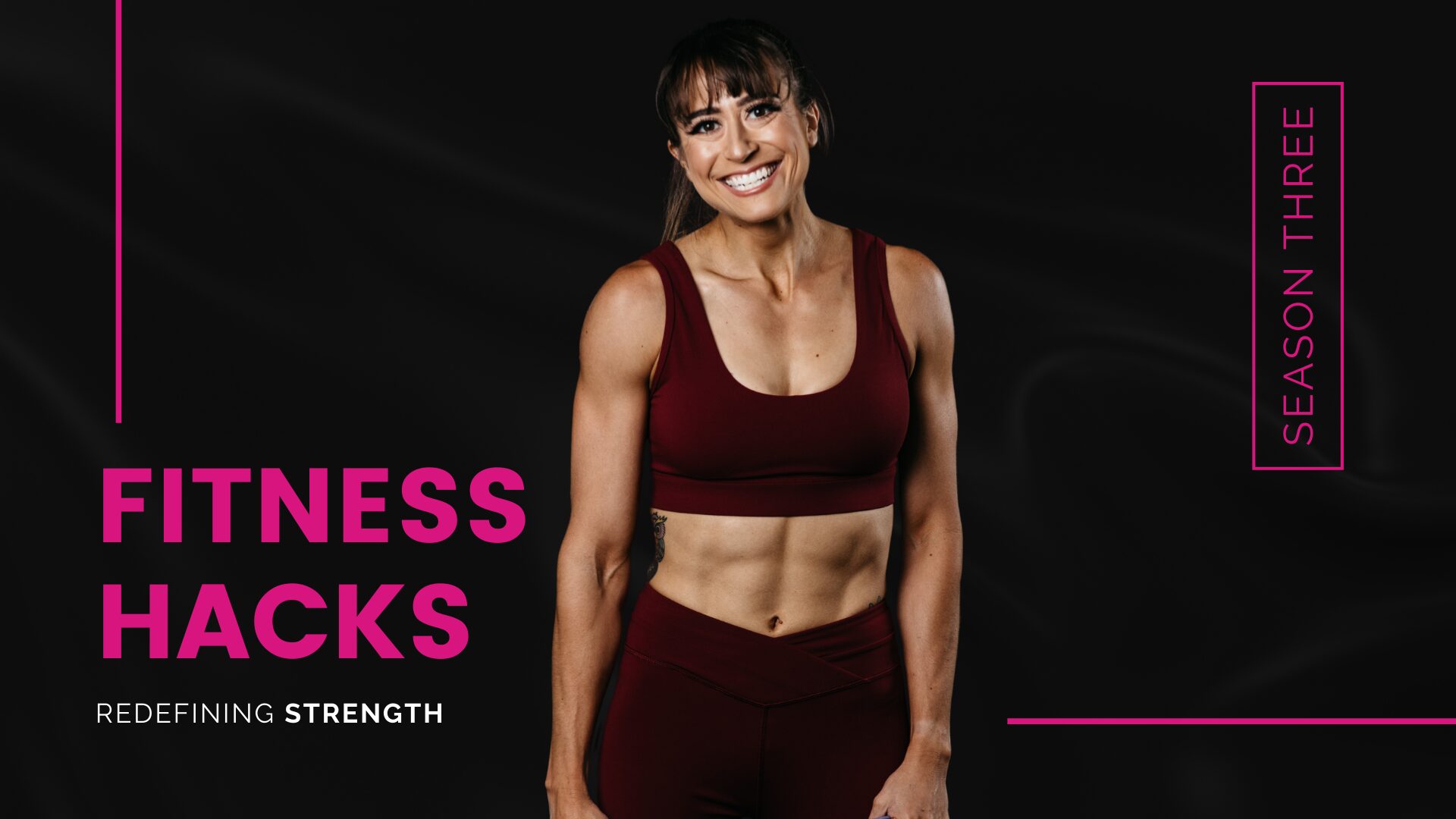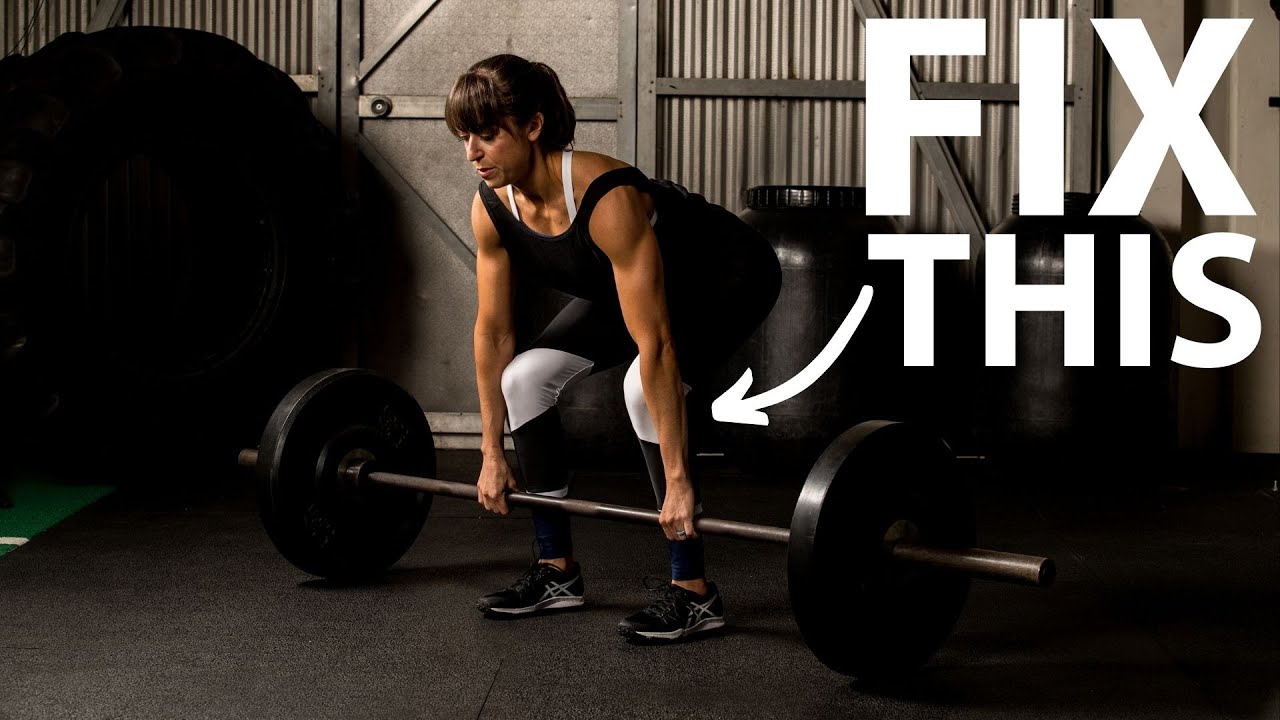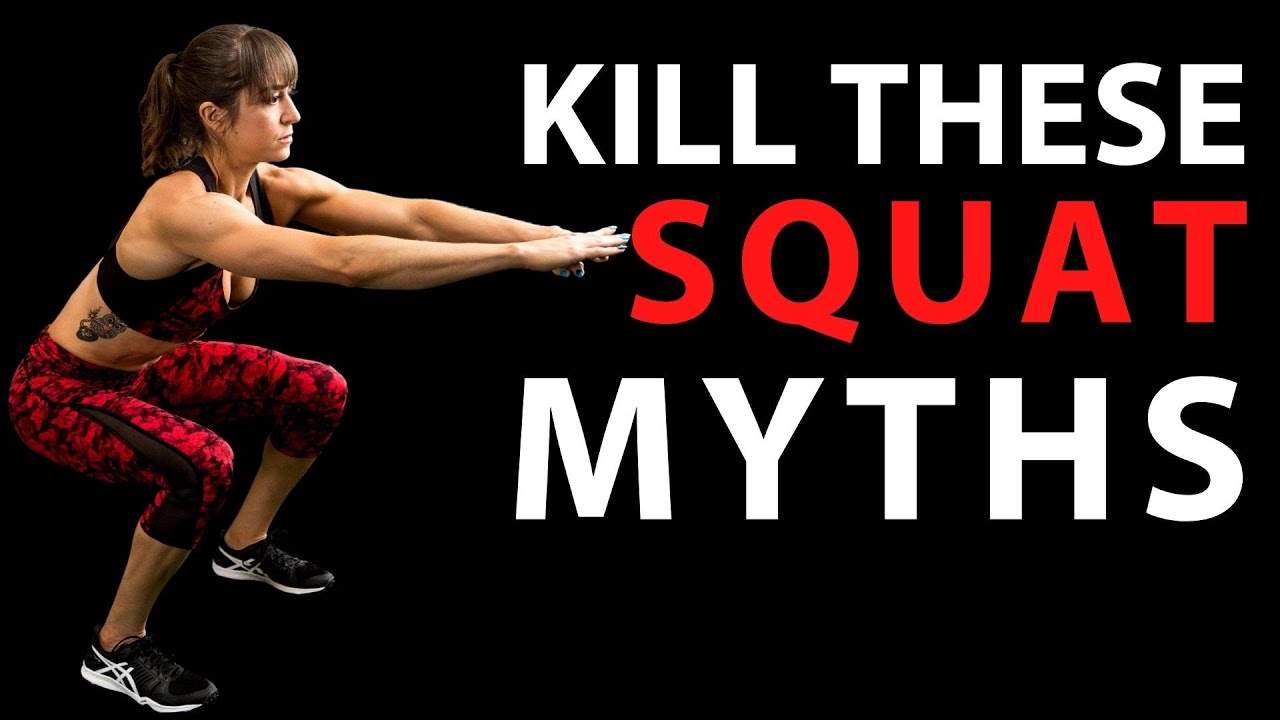They think of this move as a PULL instead of focusing on the PUSH to initiate the lift.
And that focus on the deadlift as a pull is often what results in us overloading our lower backs instead of correctly bracing our abs and using our hamstrings and glutes to initiate the movement of the bar off the ground.
Instead of thinking about pulling the bar up off the ground, next time you set up to deadlift, think about PUSHING the ground away with your legs.
While a seemingly simply change in how we cue ourselves to do this move, this can change the entire sequencing of how we recruit muscles to perform the movement.
Think about it this way…
When you step up to the bar and think, “I have to pull this off the ground,” you may hinge at the hips to sink down to the bar and grab it, but your innate response is to then start to tug with your upper body and arms.
This often results in mistakes like the bar drifting away from our shins, us not engaging our lats to lock everything in, rounding of the thoracic and lumbar spine, not to mention our butt rising up far too quickly, resulting in what is often called the stripper deadlift.
This can all lead to over use of our back instead of our glutes being a driver of the lift.
This simple miscue in how to initiate the move can be the culprit of our improper recruitment patterns and result in compensations and injury,
When we instead focus first on this move as a PUSH, our attention shifts to our foot’s connection with the ground and the use of our legs to initiate the movement.
It allows us to create and maintain the upper body tension we need to hold the bar while focusing on the movement coming from our lower body.
So next time you step up to the bar, don’t think about pulling the bar off the ground. Focus instead on PUSHING the ground away with your legs!
Now what are 3 other tips to improve your deadlift so you can rock this amazing lift?
Tip #1: Don’t be married to one deadlift variation.
I LOVE….did I say LOVE!? The barbell sumo deadlift. Honestly if I could only do one move the rest of my life, that move would be it.
BUT as much as I love the barbell sumo deadlift, this is not the only deadlift variation I use personally or with all of my clients.
Not every deadlift variation will be right for us and our build and previous injuries.
And different variations may suit our needs and goals as they change over time.
Not only may we use different stances, different amounts of knee flexion and even different starting positions to activate muscles to different extents, but we may change up the equipment we use to load the moves down and provide resistance.
The key is using the hip hinge movement in a way that addresses our needs and goals instead of getting caught up in one version being the “best” or “right” way to do things.
If you have slightly longer legs?
You may find the sumo stance works better for you.
Whereas if you want to target your back in general a bit more? You may choose to do the conventional deadlift.
Or if you want to place an emphasis on working your hamstrings?
Maybe you do a Romanian Deadlift.
If you’re just starting out with deadlifting?
Maybe you use a kettlebell instead of a barbell. The kettlebell can be a great tool to use to learn how to hip hinge correctly.
It’s easier to set the kettlebell back between your feet to properly load your glutes during the deadlift whereas there is more risk with the barbell variation of it drifting forward in your efforts to protect your shins, which can lead to lower back overload.
You can even do band deadlifts or unilaterally loaded deadlifts to create more tension at the top of the move where the glutes are stronger or focus more on your core strength, creating an even anti-rotational element to the move.
The point is, there are so many different variations of this amazing hip hinge movement you can use to get the most out of the exercise and even use the move as its own accessory lift!
Tip #2: Create tension before you lift.
Bracing is key if you want to protect your lower back.
But it’s not just about bracing your abs and creating tension there when it comes to the deadlift.
While you want to engage your abs as if you’re about to be punched in the gut to help protect your lower back as well as exhale during exertion in the lift, you want to make sure you create tension in a few different places BEFORE you even attempt to move the bar off the ground.
This helps make sure that muscles work efficiently together.
Too often we see rounding of our back occurring because we lose tension or haven’t properly engaged before starting the lift.
Next time you set up to deadlift, think about your foot placement on the ground. Think about driving the two points in the ball of your foot and one in your heel down hard into the ground.
As you hinge and grab the bar, engage your lats and depress your shoulder blades so your shoulders feel locked in.
Even think about both hands fully wrapping around to grab the bar so that each finger has that connection.
Then create that tension not only down into the ground but also through the bar. While you won’t lift the bar, you want to think about removing any “slack” from your arms so that everything is locked in.
By creating this tension, you can then use your body as a lever to lift by driving the ground away.
While this sounds like a lot of things to focus on, the engagement will become natural over time.
But using this little checklist to set up when you’re learning can help you make sure you’re creating tension in the right areas to use muscles efficiently to lift.
Part of strength is using muscles efficiently together.
Tip #3: Remember every lift is PRACTICE.
Every time we deadlift, we are practicing the movement pattern.
And what we do consistently becomes habit.
Therefore improper form during our “practice” will lead to us consistently implementing improper form and recruitment patterns as we progress.
That can result in us not only not progressing as far as we’d like in terms of lifting more with this amazing move, but it can also result in overload which eventually results in injury.
It’s why, as hard as it is to check our ego, at points we need to regress to progress.
While there will be some form break down when you’re an experienced lifter testing those limits and attempting one rep max work, you need to remember that when you hit that compensation point, it’s key to then address those weak links.
Sometimes you have to lower the loads and go back to basics. You have to use accessory lifts to work on strengthening muscles or components of the movement.
Sometimes you even need to use other deadlift variations to help you build up.
Progress is never linear, and we have to remember that no matter how advanced we are, each lift is practice and teaches us things we need to go back and work on.
SUMMARY:
The deadlift is an amazing hip hinge movement to strengthen your entire backside.
Learning how to perform this movement correctly and control it can often be the key to even avoiding back aches and pains in the future.
Start focusing on that push away to drive the movement while using these 3 tips to help tailor this amazing move to fit your needs and goals!
What is your favorite deadlift variation?





